
Nikkor Z 40mm F2 Review
Earlier this year I finally took the plunge and added a Nikon body to my kit so that I could test Z-mount lenses. One of the earliest reviews I did was of the Viltrox AF 40mm F2.5 Z, an inexpensive prime lens that nicely covers the “normal” angle of view. My findings were mostly very positive, but I was interested in exploring Nikon’s own value offering at this focal length – the Nikkor Z 40mm F2. I had ordered one almost immediately, but due to some customs delays, it took a little longer than I wanted for it to arrive. Eventually it did arrive, however, and I’ve been spending the last 3-4 weeks with the lens and getting a feel for it and how it compares to the Viltrox. I will release a direct comparison video in the near future, but first I wanted to focus on the 40mm F2 directly. Is the first party lens the way to go? Find out my thoughts by watching the video review below…or just keep reading.
Follow Me @ YouTube | Patreon | Instagram | Facebook | DA Merchandise | Flickr | 500px | X
__________________________________________________________________________________________________
This review of a retail-sourced copy of the lens that I purchased new myself. As always, this is a completely independent review. All opinions and conclusions are my own. *The tests and most of the photos that I share as a part of my review cycle have been done with the 45MP Nikon Z8, which I reviewed here.
__________________________________________________________________________________________________
The full retail price of the Nikkor lens is $299 USD (nearly double that of the Viltrox), though it currently is available at right under $230, which is close enough in price to make things interesting. The Nikkor lens obviously has the advantage of being a first party lens and having a wider maximum aperture (F2 is 2/3rds of a stop brighter than F2.5), but surprisingly it is the Viltrox that has the build advantage, as it has a metal lens mount (the Nikkor uses plastic) and includes a lens hood.

Despite having a smaller maximum aperture, the Viltrox is a bit bigger. Nikon has done a great job of keeping the 40mm F2 compact and lightweight. The Nikkor has other strengths as well, included quite fast autofocus, nice bokeh, and even one surprise in its build.

So is this a lens that you should consider? Keep reading to find out.
Nikkor 40mm F2 Z Build and Handling
The 40mm F2 actually comes in two different versions. There is the standard version that I’m reviewing here, but then also a Special Edition that has a retro aesthetic that harkens back to a lot of classic film era Nikkor designs. This is essentially just a cosmetic upgrade, however, as the basic features and functions of the lens remain the same. The MSRP difference is only $20 between the two, with the SE version being slightly more expensive, though at the moment a discount on the normal version makes the difference between the two more notable.


The build here is very basic, with plastic everywhere up to and including the lens mount.

It is rare that I see plastic mounts from anyone these days outside of the less expensive first party lenses from Canon and Nikon. It’s a little hard to justify in a lens with an MSRP of $299 USD when I’ve reviewed a number of sub-$100 lenses with metal lens mounts, and the Viltrox 40mm F2.5 costs less than $160 and sports a metal mount.
What’s interesting is that while I cannot detect a weather sealing gasket at the lens mount, Nikon does show a cutout that demonstrates some weather resistance with several internal seals.

I included the language that Nikon uses, as it is a big ambiguous. It is both designed to prevent dust and moisture from entering the lens but is not guaranteed to be dust and drip-resistant in all situations. I would interpret that to mean, “don’t go crazy”. I haven’t hesitated to use this lens while it is raining, but I would treat it as a top of the line sports lens, either.
That’s pretty much it for features, however. There are no switches or buttons on the lens barrel.

All we have is the control ring, which by default is set up for manual focus. You can set it up in camera to perform other functions, however, like serving as an aperture ring or controlling exposure compensation.

The main object for this lens is to keep things small and lightweight. A lens like the Nikkor Z 50mm F1.8 S-line lens is comparably large (86.5mm in length, 415g in weight), so the Nikkor 40mm F2 gives a genuinely compact alternative, at 70mm (2.8″) in diameter and just 45.5mm (1.8″) in length. It weighs in at just 170g (6oz). By comparison the Viltrox 40mm F2.5 Z is 68mm (2.7″) in diameter and right under 60mm (2.2″) in length. The Viltrox weighs 180g (6.3oz), so the Nikkor is shorter (10mm) and very slightly lighter (10g). Both lenses share a common 52mm front filter thread.

One key advantage over the Viltrox can be seen from this front view. The Nikkor has a higher blade count (9) and they are curved blades, making for a more circular aperture shape even when stopped down. The aperture looks pretty good from the front view.

The Nikkor 40mm F2 would obviously be a great pairing for smaller, more compact Nikon cameras. The size is somewhat wasted on my mammoth Z8 body where the grips sticks out nearly as much as the lens.

There is no lens hood included, unfortunately. The front is actually not even designed with a bayonet for a lens hood, so any lens hood you might use would have to be screwed on via the filter threads, which is never optimal.
The Nikkor 40mm F2 is able to focus more closely than some competing lenses, allowing you to get as close as 29cm, which results in a very useful 0.17x magnification level.

Up close performance isn’t fantastic, however, with less contrast and detail that what I see at more moderate focus distances. You can see from this minimum focus distance shot and its crop that textures don’t really “pop” at F2:


All told, this is pretty bare bones lens, but it is also quite inexpensive by first party standards. The inclusion of some weather sealing is an unexpected pleasure.

The MSRP of $299 USD is higher than a budget lens like Canon’s RF 50mm F1.8, but the current buying price of the Nikkor of $227 USD closes that gap nicely and makes the Nikkor a more compelling bargain. You’re getting weather sealing for that extra $28, which feels like money well spent to me.
Autofocus and Video
The Nikkor Z 40mm F2 utilizes a stepping focus motor (STM) that is, for the most part, surprisingly fast. Focus changes happen very quickly whether indoors or outdoors, and most of the time you won’t think about autofocus at all because the job just gets done quickly and efficiently. There’s definitely more focus speed here than the inexpensive Canon lens that I just mentioned. This allowed me to be a little more reactive with what I shot and what all stayed in focus.

I was able to shoot with precision as well, grabbing small objects and focusing accurately on them.

I love 40mm for “everyday photography”, like capturing family events, as it is a focal length that works well in the typical room, allowing you enough room to capture the scene in context but with a normal, unexaggerated perspective. This is the same reason why a lot of people enjoy a lens like this for street photography. I didn’t have an opportunity to do street during my review period, but I did use it as a general purpose/walkaround lens and really love the focal length for that.

My only complaint for stills is that on a few occasions when shooting landscapes that focus would randomly jump right at capture to the very front of the frame, leaving most of the scene out of focus even when shooting at smaller apertures like F5.6:

It seemed to be random, however, as most of the time focus was fine. It also seemed to happen more at smaller apertures than at F2-F2.8.
There is a faint whirring sound if you put your ear right next to the lens barrel, but if I held the camera at chest level and racked focus here and there, I couldn’t hear anything.
Switching to video found focus pulls happening with good speed, but sometimes there was a quick micro-pulse where focus racked quickly the wrong direction (backwards) before moving forward. It seemed that speed sometimes outpaced confidence. Focus breathing felt fairly well controlled.
My “hand test” where I alternately block the camera’s view of my face with my hand and then remove it was a mixed bag. I sometimes had a hard time convincing the camera/lens to focus on my hand (even what that was clearly the domination subject in frame), though sometimes it would transition fine. This test so far hasn’t seemed quite as confident on Nikon as what I typically expect on Sony or Canon.
I found real world focus changes to sometimes be a little too abrupt for my tastes. You can tame that a bit via the focus speed setting in camera, but it won’t fundamentally change the nature of the lens.

So I give good marks for focus speed, and (most of the time), accuracy. Video focus was a little hit and miss for me, but I would say that in general autofocus is pretty good for what is one of the least expensive lenses on the Nikon Z platform.
Image Quality Breakdown
The Nikkor Z 40mm F2 is an FX (full frame lens), though it can also be used on DX cameras where it will give a full frame equivalent of 60mm due to the 1.5x crop factor on DX. This is an extremely simple optical design, with just six elements in 4 groups. Two of those elements are aspherical elements. It is much less complicated than the Viltrox lens (10 elements in 6 groups). The MTF chart for the Nikkor shows a good (not great) center performance and then a consistent decline towards the corners (which frankly look a little weak).


Some of the initial reports I read of the 40mm F2 had caused me to expect a little more sharpness from the lens than I actually found. I would call what I actually found “balanced”, with a little less sharpness but slightly better bokeh than expected.

The personality of the Viltrox 40mm and the Nikkor 40mm are basically opposites. The Viltrox is definitely the sharper of the two lenses:

But the Nikkor lens clearly has the softer, smoother bokeh rendering.

It really comes down to which trait you prefer.
There is a slight amount of LoCA (longitudinal chromatic aberrations), but nothing too severe.

Out in the real world I noted less color fringing and more of a basic spherical aberration that makes some of the edges of objects “bleed” a bit at wide apertures.


Lateral chromatic aberrations near the edge of the frame are essentially non-existent.

There’s no fringing issue here; just a bit of softness due to some surface aberrations.
If we move on to vignette and distortion we find a minimal amount of barrel distortion which required just a +2 to correct for. It is both minimal and linear, so it corrects fine but would also be fine uncorrected in almost every application.

You’ve probably noticed however that vignette is VERY heavy at F2. I find it to be noticeable even in the viewfinder (which is showing a corrected image), as there is an obvious difference between F2 and smaller apertures. I had to pretty much max out the vignette sliders to get the correction that you see.
You can see a pretty serious difference in the way the image is lit when I compare the same shot at F2 and then at F3.5. Both shots are with corrections on, but you can see that the corrections don’t quite make for a clean image at F2:

We’ll move on to inspecting our test chart. This test has been done on a 45MP Nikon Z8 sensor. I use a high end tripod and two second camera delay to ensure vibration doesn’t affect images. Here’s a look at the test chart that we will examine at high magnification:

If we take a look at crops (at roughly 200%) at F2 from the center, mid-frame, and lower right corner, we find that center performance is good, but the mid-frame and the corners are definitely much weaker.



In this stark reality, the lens isn’t particularly sharp. But in some ways I can understand why some people have found the lens better than this baseline performance, as real world images look better than what chart tests would suggest.


In other shots, however, the lower contrast becomes more obvious, and I don’t like images as well on a pixel level.


Things are better at distance for a few reasons. First of all, the lens seems optimized for medium to distance rather than close focus, so I think that you get better results in general when you shoot from 2 meters out. There’s also the reality that (unlike test charts), you rarely have a completely flat field of view in real world shots. It’s more likely that edge performance will be more important than corner performance. Case in point is this shot at F2, and the crops show that while contrast isn’t popping off the page, there’s plenty of apparent detail there across the frame.



The same is true here of a golf course. When I looked at a pixel level, I wasn’t blown away, but I did find the results better than expected.



Stopping down to F2.8 does improve contrast (and reduces vignette), though the amount of difference varies somewhat from spot to spot across the frame. The left hand of the frame was definitely better than the right hand on my copy. This mid-frame spot was fairly representative of the amount of improvement I saw. You can definitely see a brighter image with more contrast and detail, though not radically so.

There’s more corner improvement by F4, and it is better still by F5.6:

We noted in the image of city hall that the results were definitely usable at F2, but if we revisit a side by side comparison we can see that there’s a pretty radical improvement by F5.6. Details are MUCH more crisp.

Peak performance for consistency across the frame is found at F8, where the Nikkor Z 40mm F2 is nice and sharp all across the frame.
Expect the typical diffraction pattern on high resolution cameras where the image is a little softer by F11 and softer still at the minimum aperture of F16, though frankly I’ve seen much worse when it comes to diffraction.

As noted earlier, however, the real strength of the 40mm F2 is in the quality of its bokeh, which is nice and pleasing. This allows the lens to punch above its weight a bit, particularly if you are just looking at the images globally rather than at a pixel level.

Here’s another shot that shows a fair soft and smooth background that isn’t marred by a lot of outlining.

One final shot of a chain link fence with some blackberry vines growing on it shows that the lens handles the recurring pattern and hard edges of the chain link fence well.

Colors are also nice, with a good level of richness. The greens look rich in this shot:

And the reds look pretty rich here.

The lens doesn’t come with a hood, but fortunately flare doesn’t seem to be a big problem. There’s only a mild amount of veiling wide open, but little ghosting or blobs of color. The flare pattern becomes a little more defined with stop down to small apertures, but never too destructive.



I was never able to produce much in terms of an attractive sunstar, so don’t buy the lens for that.
I was able to get a number of images I was very happy with, so I do think the lens is capable of overcoming its limitations and being well worth using.

Overall, I would say there is far more good than bad here. The vignette is too heavy, and the lens doesn’t have exceptional contrast at wider apertures, but the overall look of images seems better than the technical limitations suggest, and I like the bokeh from it quite well. You can check out more photos by visiting the image gallery here.
Conclusion
Lenses like the Nikkor Z 40mm F2 are very valuable additions to a brand’s roster of lenses. They provide nice optical upgrades to less competent zooms for either DX or FX cameras. They are an affordable way to add a first lens after investing in an expensive new camera. They are light enough to bring along to provide an additional perspective. I’ve seen a number of people who state that this lens and the 28mm F2.8 are their favorite Z-mount lenses.

The Nikkor Z 40mm F2 has a lot of strengths and only a few weaknesses. Autofocus is fast and mostly accurate. There’s some weather sealing. Colors are nice, the bokeh is pretty, and the detail is excellent when the lens is stopped down a bit. I’m not crazy about the plastic lens mount, but its not a deal-breaker, nor is the rather featureless design; this is a lens that currently only costs $230, after all. The vignette is strong and the lens isn’t as sharp at wide apertures as I’d hoped, but yet it produced plenty of images that I really liked despite those things.

The Viltrox 40mm F2.5 does exist as a valid alternative, particularly if sharpness is of paramount importance to you, but I suspect that the Nikkor 40mm F2 will continue to sell just fine…as it should. I do think it makes more sense at the current price than at $300, and we’ll see if Nikon agrees over the long haul. I bought the lens that I’ve tested, and I’ll certainly get some good use out of it moving ahead.

Pros:
- Compact and lightweight
- Great price to performance ratio for a first party lens
- Weather sealed
- Higher aperture blade count than Viltrox
- Autofocus is fairly snappy
- Good magnification
- Bokeh is nice
- Real world images look good
- Consistent sharpness across the frame when stopped down
- Low distortion
- Low fringing
Cons:
- Plastic lens mount
- No included hood
- Some random focus misses
- Very heavy vignette
- Corners pretty soft
_________________________________________________________________________
GEAR USED:
Purchase the Nikkor Z 40mm F2 @ B&H Photo | Adorama | Amazon | Camera Canada | Amazon Canada | Amazon UK | Amazon Germany
_______________________________________________________________
Purchase the Nikon Z8 @ B&H Photo | Adorama | Amazon | Camera Canada | Amazon Canada | Amazon UK | Amazon Germany
_________________________________________________________________
Want to support this channel? Use these affiliate links to shop at: B&H Photo | Amazon | Adorama | Camera Canada | Amazon Canada | Amazon UK | Ebay | Make a donation via Paypal
Buy DA Merchandise https://bit.ly/TWIMerch

Keywords: Nikkor, 40mm, F2, Nikkor 40mm F2, Nikon 40mm F2, f/2, Nikon, Nikon Z8, Z, Z-mount, Z8, Review, mirrorless, Full Frame, Sports, Tracking, Dustin Abbott, Real World, Comparison, Handling, Focus, Portraits, Resolution, High ISO, Image Quality, Sample Images, Photography, 45MP, #letthelightin, #DA, #NIKON, #Z8, #NIKONZ8

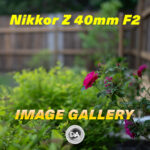
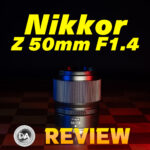
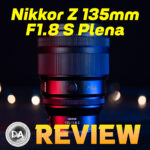

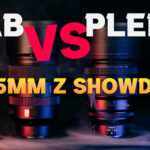
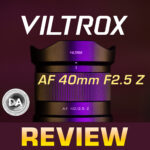

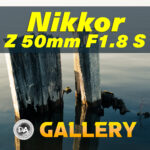


[…] I’m traveling. I’ve also reviewed a number of compact lenses for Nikon Z, from Nikon’s own Nikkor Z 40mm F2 to really compact lenses like the Viltrox 20mm F2.8 and the even smaller 28mm F4.5 “Chip”. […]
[…] existed on modern full frame mirrorless systems until, when Nikkor released a 40mm F2 lens (my review here) and Sony released a 40mm F2.5 (my review here). A few years later Viltrox released a 40mm F2.5 on […]